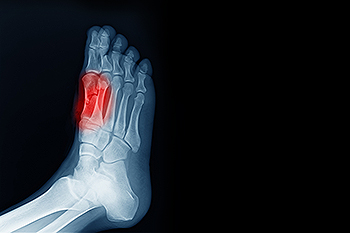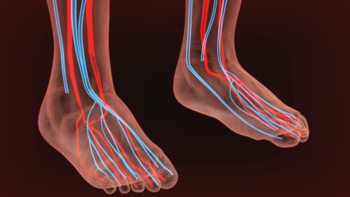
Managing foot and ankle injuries in diabetic patients is complex. There is no one-size-fits-all approach for surgeries in these cases. Diabetic injuries can involve different types of bone breaks and dislocations, making treatment difficult. A major challenge is dealing with the limited soft tissue in the foot and ankle, which can easily become damaged. This is especially difficult in diabetic patients who might have other health issues like poor blood circulation or weak immune systems. Podiatrists treat surgeries in diabetic patients carefully to avoid harming the soft tissue and ensure proper healing. They often use special techniques, like minimal cuts or external supports, to repair the bones while protecting the skin and muscles. In severe cases, they may perform the surgery in stages. For diabetic patients, keeping bones stable and avoiding further injury is crucial, which sometimes involves additional support for nearby joints. If you are a diabetic patient and have sustained a foot or ankle injury, it is suggested that you make an appointment with a podiatrist immediately. This medical professional can make a proper diagnosis and evaluation, with a determination of whether surgery is right for you.
Foot and ankle trauma is common among athletes and the elderly. If you have concerns that you may have experienced trauma to the foot and ankle, consult with Dean Kim, DPM from Greater Texas Foot & Ankle Specialist. Our doctor will assess your condition and provide you with quality foot and ankle treatment.
Foot and ankle trauma cover a range of injuries all over the foot; common injuries include:
- Broken bones
- Muscle strains
- Injuries to the tendons and ligaments
- Stress fractures
Symptoms
Symptoms of foot and ankle injuries vary depending on the injury, but more common ones include:
- Bruising
- Inflammation/ Swelling
- Pain
Diagnosis
To properly diagnose the exact type of injury, podiatrists will conduct a number of different tests. Some of these include sensation and visual tests, X-rays, and MRIs. Medical and family histories will also be taken into account.
Treatment
Once the injury has been diagnosed, the podiatrist can than offer the best treatment options for you. In less severe cases, rest and keeping pressure off the foot may be all that’s necessary. Orthotics, such as a specially made shoes, or immobilization devices, like splints or casts, may be deemed necessary. Finally, if the injury is severe enough, surgery may be necessary.
If you have any questions, please feel free to contact our office located in Frisco, TX . We offer the newest diagnostic and treatment technologies for all your foot care needs.





